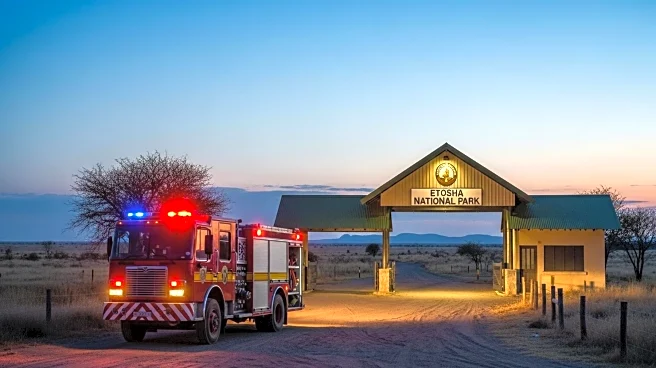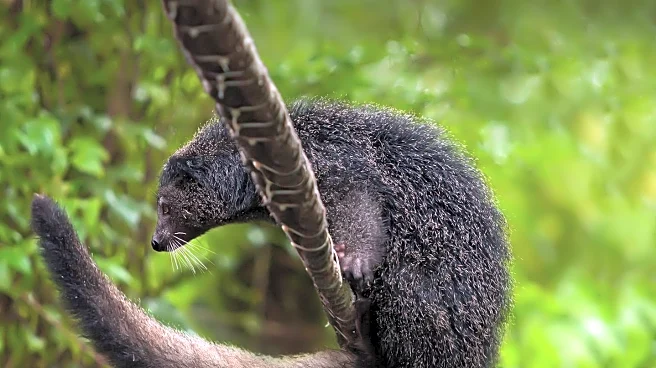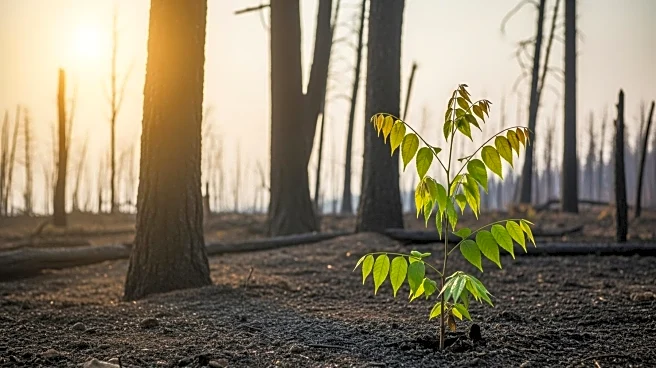What is the story about?
What's Happening?
Namibia has deployed helicopters and hundreds of soldiers to combat a fire that has engulfed a third of Etosha National Park, a key nature reserve and tourist attraction. The fire, believed to have started at a charcoal production site outside the park, has spread rapidly, killing at least nine antelope and destroying wildlife habitats and grazing pastures. Etosha National Park is renowned for its vast salt pan visible from space and is home to critically endangered black rhinos. The fire poses a significant threat to the park's biodiversity and the surrounding regions of Omusati and Oshana.
Why It's Important?
The fire in Etosha National Park is a critical environmental and economic concern for Namibia. As one of southern Africa's top tourist destinations, the park's health is vital for the country's tourism industry, which contributes significantly to the national economy. The destruction of wildlife habitats and the loss of endangered species could have long-term ecological impacts, affecting biodiversity and conservation efforts. The deployment of military resources underscores the severity of the situation and the need for immediate action to prevent further damage and protect the park's natural heritage.
What's Next?
Namibia's government is expected to continue its efforts to contain the fire and assess the damage to Etosha National Park. The involvement of the army and helicopters indicates a robust response, but ongoing monitoring and management will be necessary to prevent future outbreaks. Authorities may also investigate the cause of the fire and implement stricter regulations on activities near the park to mitigate risks. Conservation groups and environmentalists will likely play a role in restoration efforts, focusing on habitat recovery and wildlife protection.
Beyond the Headlines
The fire in Etosha National Park highlights the challenges of balancing economic activities with environmental conservation. It raises questions about land use policies and the impact of human activities on natural reserves. The situation may prompt discussions on sustainable practices and the importance of preserving biodiversity in the face of economic pressures. Long-term strategies may involve enhancing fire prevention measures and promoting eco-friendly tourism to ensure the park's resilience and sustainability.
AI Generated Content
Do you find this article useful?













